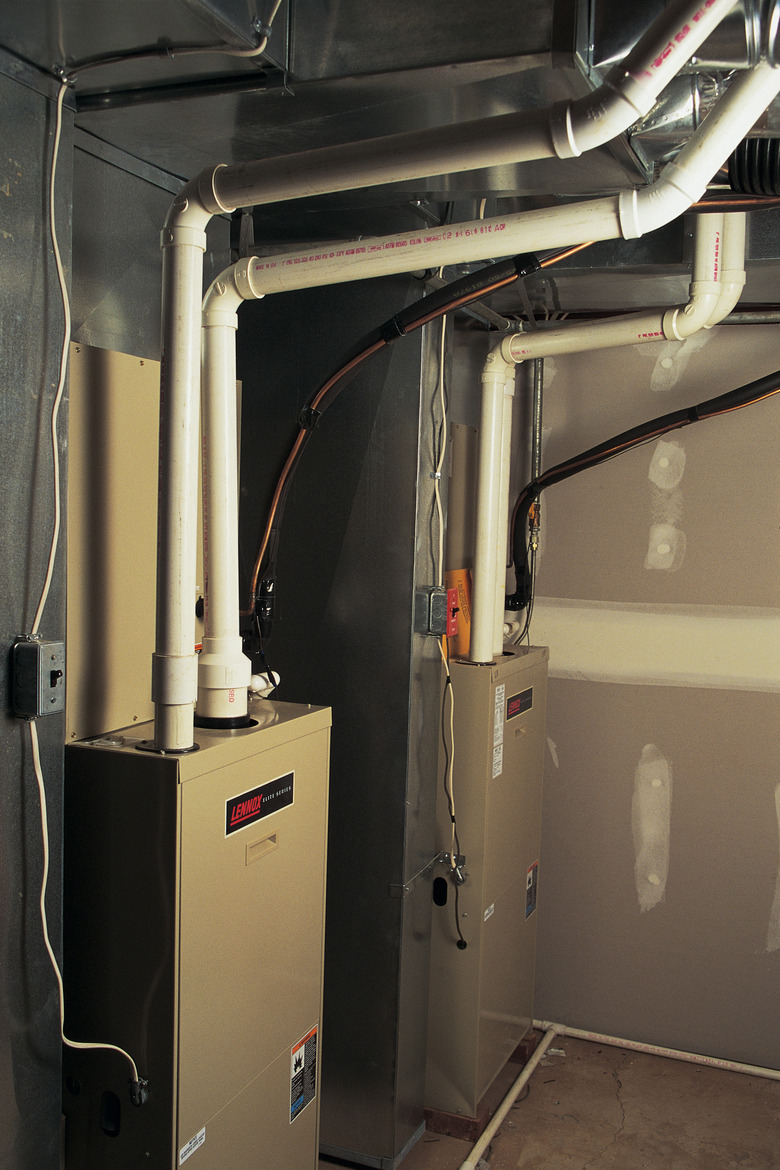My Gas Furnace Is Making A Buzzing Noise When It Starts Up
A buzzing noise from your furnace might be a simple nuisance with an easy fix or a sign of a bigger problem. A furnace can be installed in different parts of a home, including the basement, attic or crawl space. Knowing the possible causes of furnace buzzing and some solutions can help you save time and money on repairs.
Causes
Causes
A common cause of buzzing in a furnace is a loosely mounted transformer box. Your furnace has a transformer that changes the incoming power to the voltage required for the furnace. The transformer is a small box inside the furnace that has wire connections on both sides. If the transformer is dying or not securely mounted, it will buzz. Other possible causes include the failure of the blower motor or capacitor. The blower motor powers the fan inside the furnace, which blows the cool or hot air from the furnace into your home. A blower motor that is or dying or blown often buzzes or hums if power is turned on to the furnace. The capacitor, a silver device that stores electricity, helps the motor start. If the capacitor is shot, the motor might buzz.
Inspection
Inspection
Inspecting your furnace can help you determine the cause of the noise. You can remove the front cover over the burner section of the furnace and have another person in the home use the thermostat to call for heat. When the furnace kicks on, look in the inside and try to determine what area the buzzing is coming from. Don't touch any parts when the furnace is operating; you can be electrocuted. Focus on the transformer first. If you've ruled out the transformer, observe the blower motor when the furnace kicks on. If you didn't see the blower motor when you took the burner panel off, look for a second panel, sometimes near the bottom of the furnace, to open to expose the motor. Check the capacitors for leaks or corrosion.
Solutions
Solutions
Tighten a poorly mounted or loose buzzing transformer box with a screwdriver. Call for professional help if the transformer itself needs to be replaced or if securing the mounting doesn't solve the problem. A blown capacitor is relatively easy and inexpensive to replace. Because the capacitor can cause problems with the motor, replacing the capacitor before changing the motor is a low-cost solution that might fix the buzzing. A burned out, buzzing blower motor is more difficult to deal with. Replacement involves disconnecting the old motor wires and removing the motor shaft from the blower housing; professional help is commonly needed.
Significance
Significance
Failing to repair the buzzing can result in various consequences, depending on the cause of the sound. The furnace will stop working property if the capacitor, motor or a dying transformer is the cause of the sound; this is a hazard to occupants in extremely cold or hot weather. The health of a vulnerable person, such as a senior citizen, living in the home is especially threatened. If a loose transformer is to blame, the box can sustain damage from the prolonged vibrations and will eventually need to be replaced. A faulty or poorly mounted transformer can increase in noise over time, echoing throughout the house's ductwork, and faulty transformers can get hot or smoke, posing a possible fire hazard.
